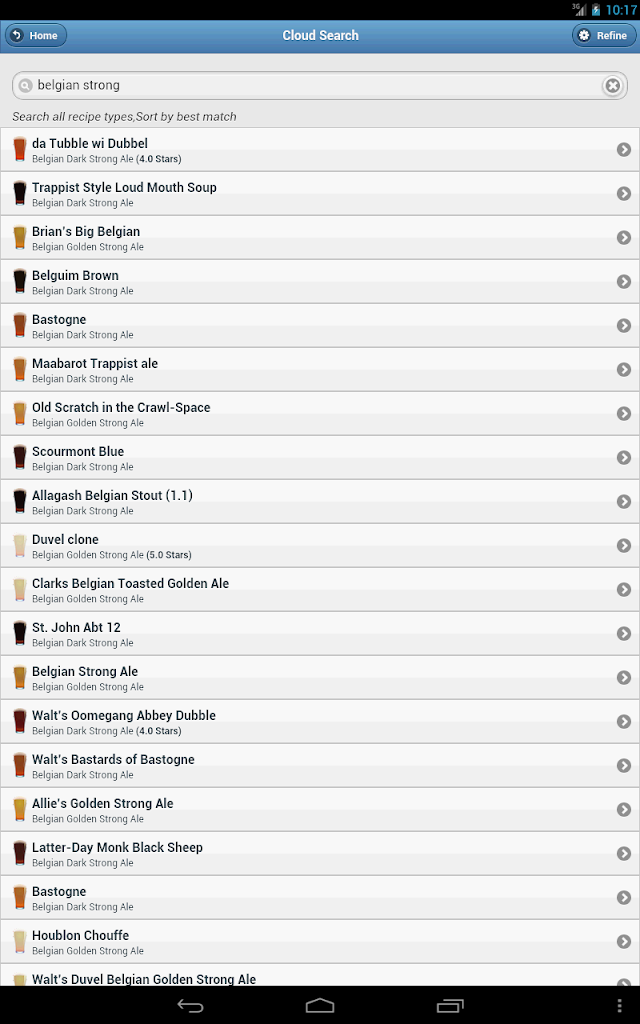
Beersmith login software#
And you can't tell by looking at them.Ħ) Without testing, no one knows the actual phDI's of their maltsħ) Without testing, no one knows the actual acidities of their maltsĨ) We don't even agree as to when a mash pH measurement should be taken, and it makes a huge differenceĩ) Sodium may depress mash pH to some measure, but software ignores thisġ0) Malt's calculated buffering capacity may act variably within the mash. But they can also be even less pure than 75.5%. They can most typically be anywhere from about 95% to 75.5% pure. To place faith in software to literally peg your mash pH for all cases and situations and recipes and methodologies is akin to believing in the tooth fairy.Ī few other problem issues found by applied science as opposed to theory (which are not likely addressed by software):ġ) Magnesium may actually disrupt calcium's ability to depress mash pH and hinder it until the boil stepĢ) Calcium from calcium chloride and Gypsum may not depress mash pH identicallyģ) Dissociation constants have known "disruptors" which will partially negate their usefulness to math modeling pH within the mashĤ) Decoction, step mashing, and single infusion lead to different mash pH results ranging to about as much as 0.3 pH pointsĥ) No one knows the ever changing and decreasing purity of their calcium chloride prills. That is only one major problem among many.

The degree of pH suppression caused by the presence of calcium within the mash is likely far less than presumed by most software. At this juncture we don't even understand the degree to which mineralization will suppress the mash pH, as Kolbach's work from the 1930's (repeated in the 1950's post WW2) is now known to be way off, yet all software (except mine to my knowledge) accepts Kolbach as gospel truth. ATC will not at all help in this, so you must measure wort at 20 degrees C. No mash pH adjustment assistant spreadsheet or online software can capture all of the inherent wild malt and unmalted grain or adjunct variabilities and intertwined chemical complexities occurring within the mash whereby to "accurately" predict mash pH as measured by factual measurement at the EBC standard # 8.17 of 20 degrees C. I brewed virtually the same recipe last year and it was one of the most smooth and enjoyable ales I've ever made.ģ0 IBU's from 60 minute EKG, 15 minute EKG, and flameout EKG. I did wait about 3 more hours to pitch, and I did not love the smell of the active fermentation in my keezer, but the smell of the finished beer is on point. I lid the kettle at flameout and counterflow chill to 68, then gravity fill straight into a thoroughly sanitized fermonster and sealed it immediately. I don't know if it's the lactic, if it's still too young, an infection, or if it's somehow the marris otter and EKG playing tricks on my palate. The first few cold samples have been distinctly tangy more than enough to ruin it for me. Kegged it last night and force carbed overnight.

I let it rest at 71 for a few days and then cold crashed for a couple more. The beer fermented fine at 67F to 1.010 and stopped there. I read later that day that 1.6 ml/g lactic is controversial at best.

My ph meter was reading 4.8 after that, but I don't fully trust it because it's cheap and I don't maintain it well. I brewed an ordinary bitter 12 days ago, and using Beersmith's calculator to hit 5.20, added 8 ml of 88% lactic to my mash.
Beersmith login android#
Beersmith login trial#
Download a free trial of BeerSmith™ Desktop.
Beersmith login for free#
Try our BeerSmith Web editor for free for 30 days.


 0 kommentar(er)
0 kommentar(er)
